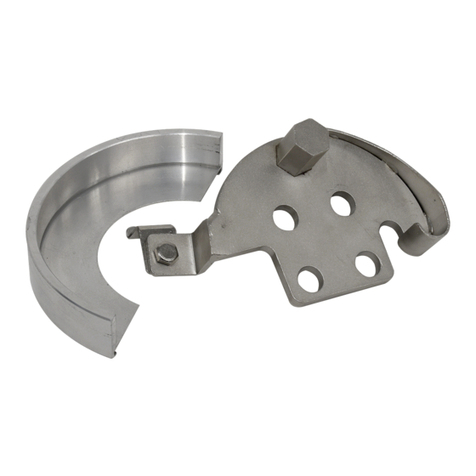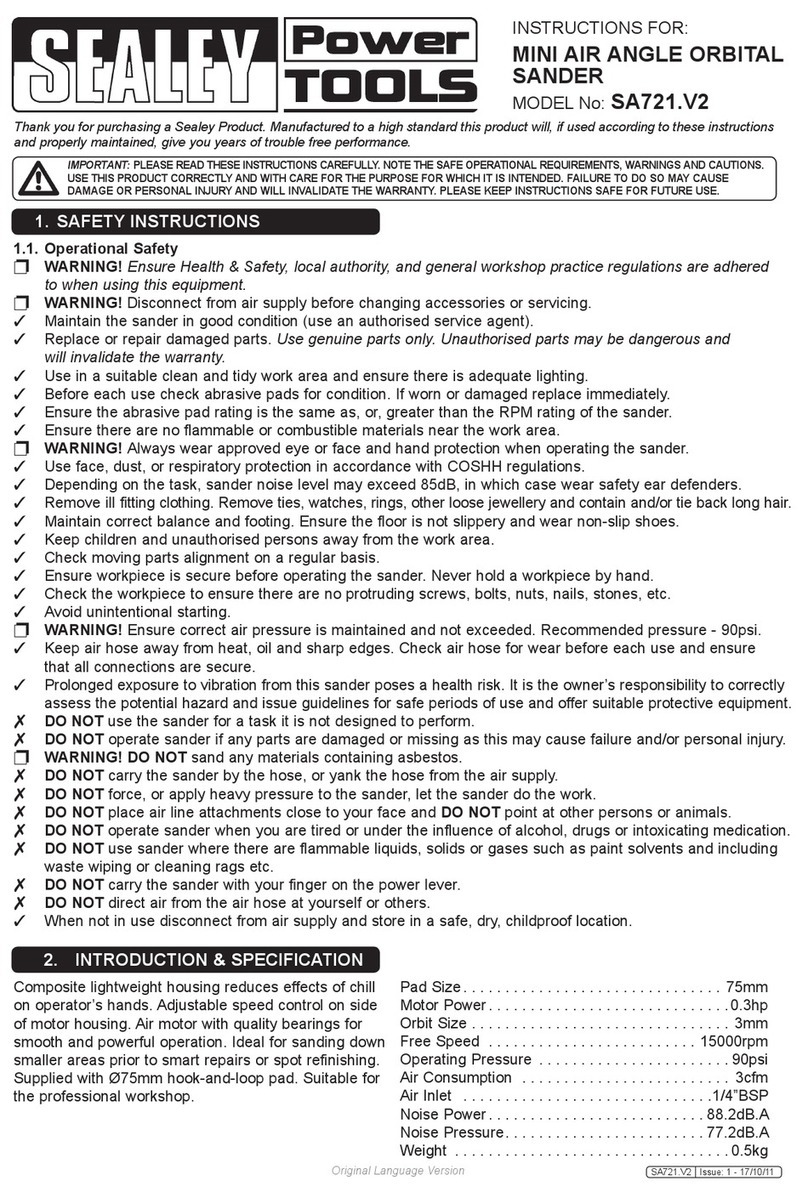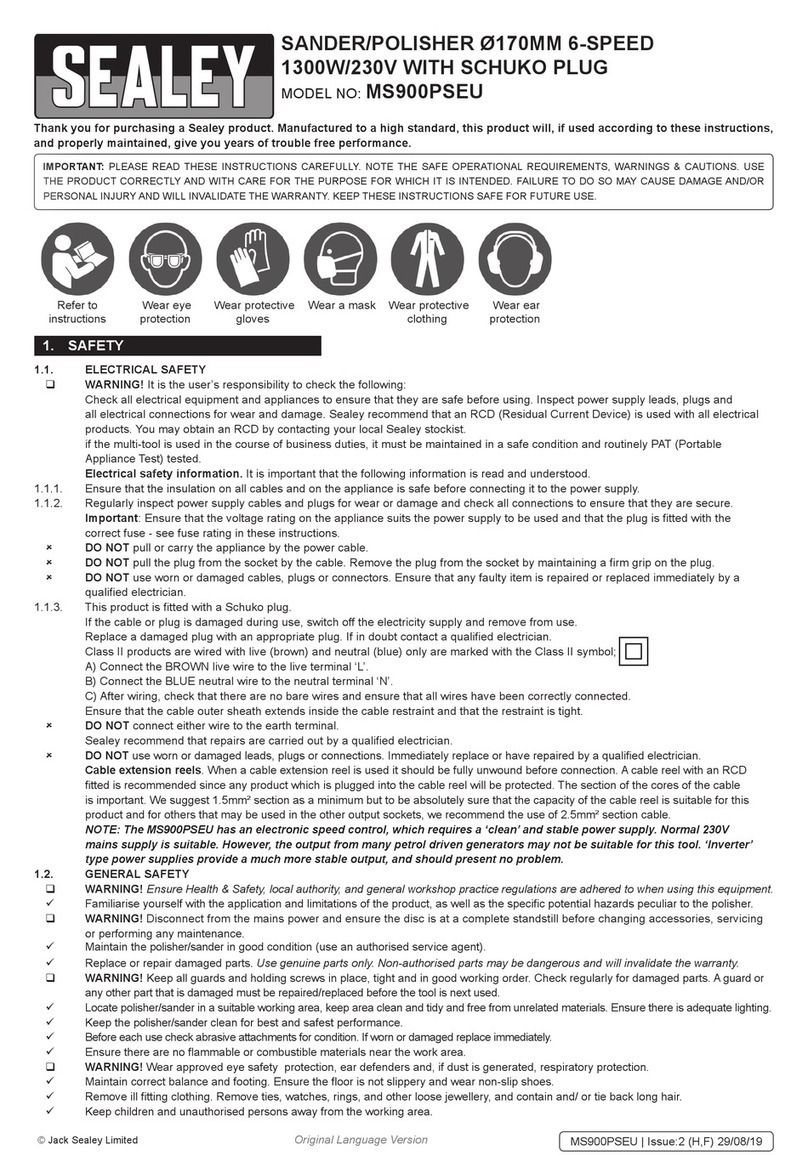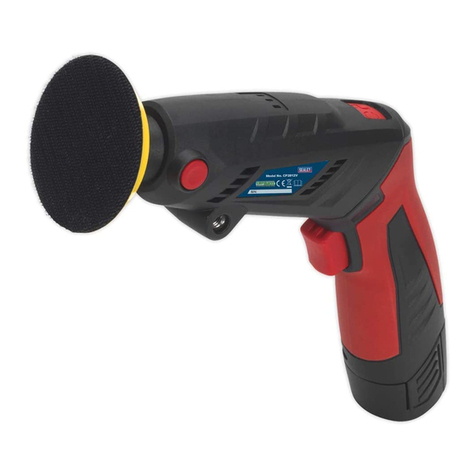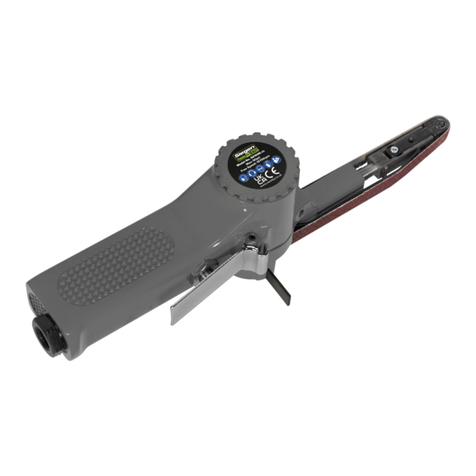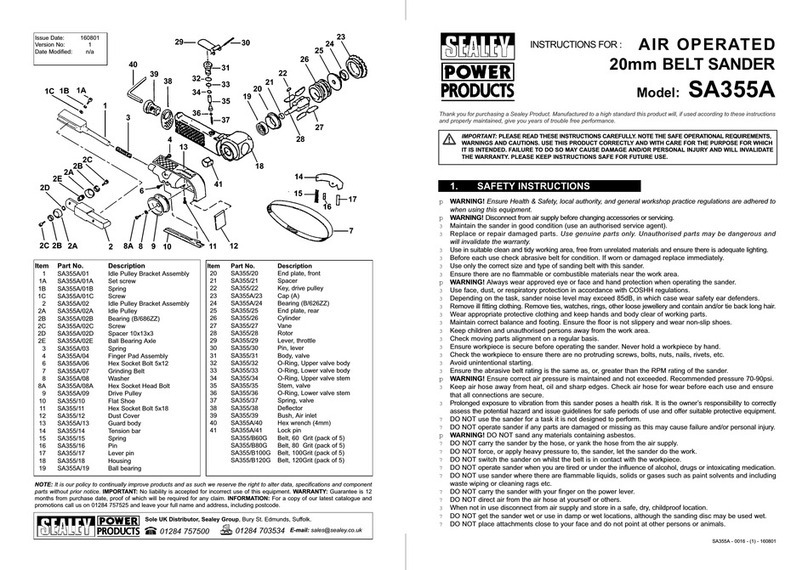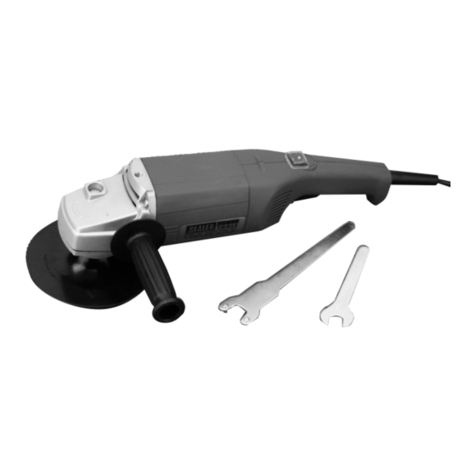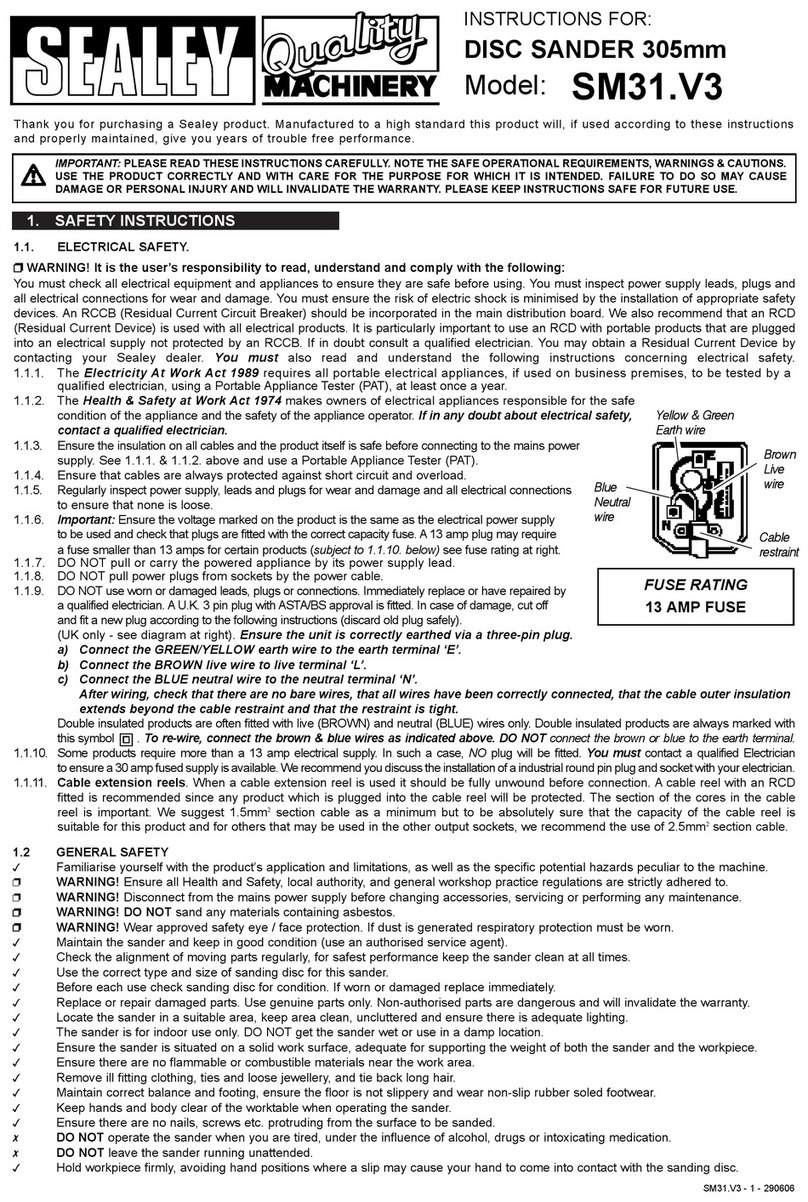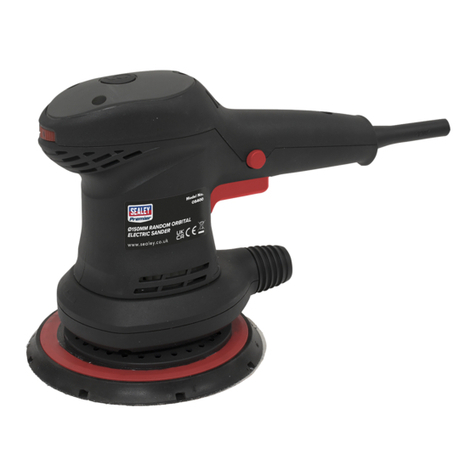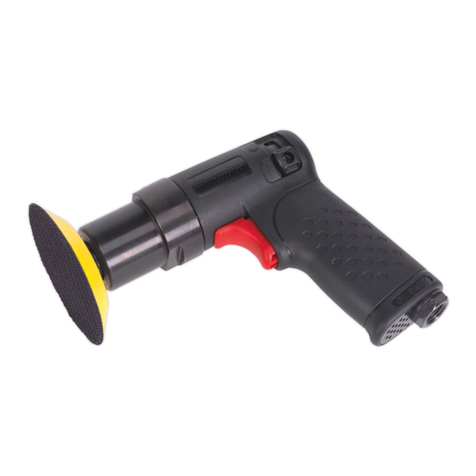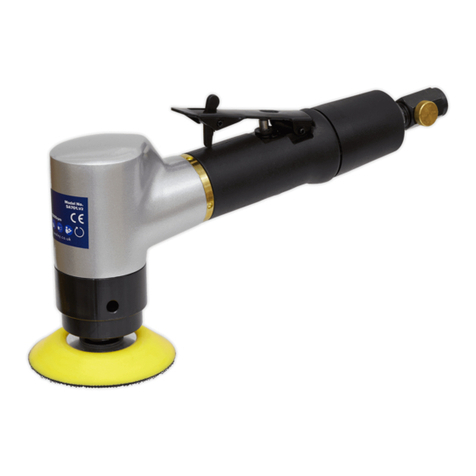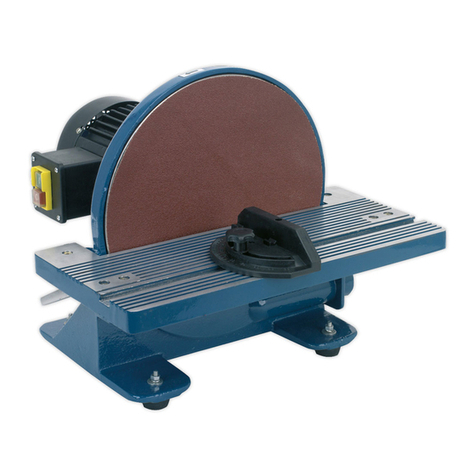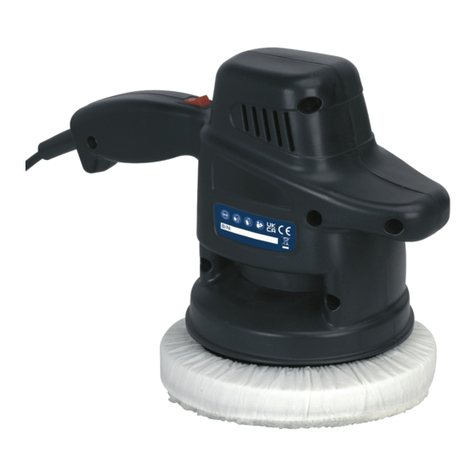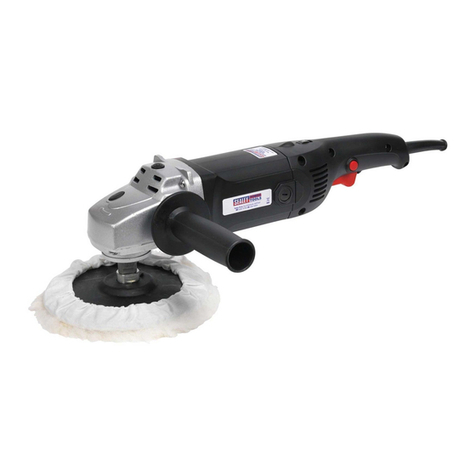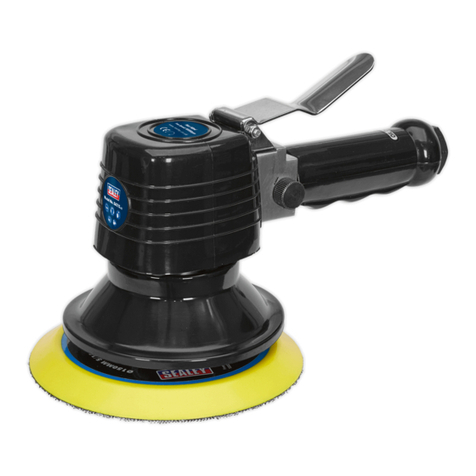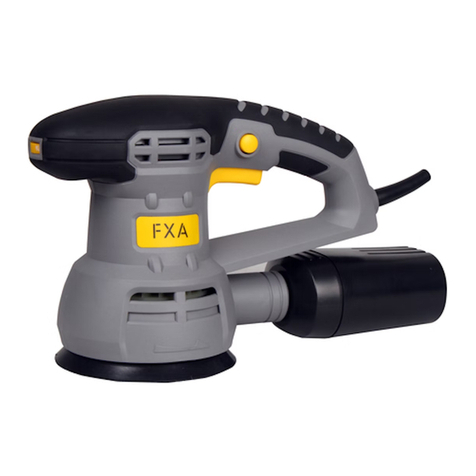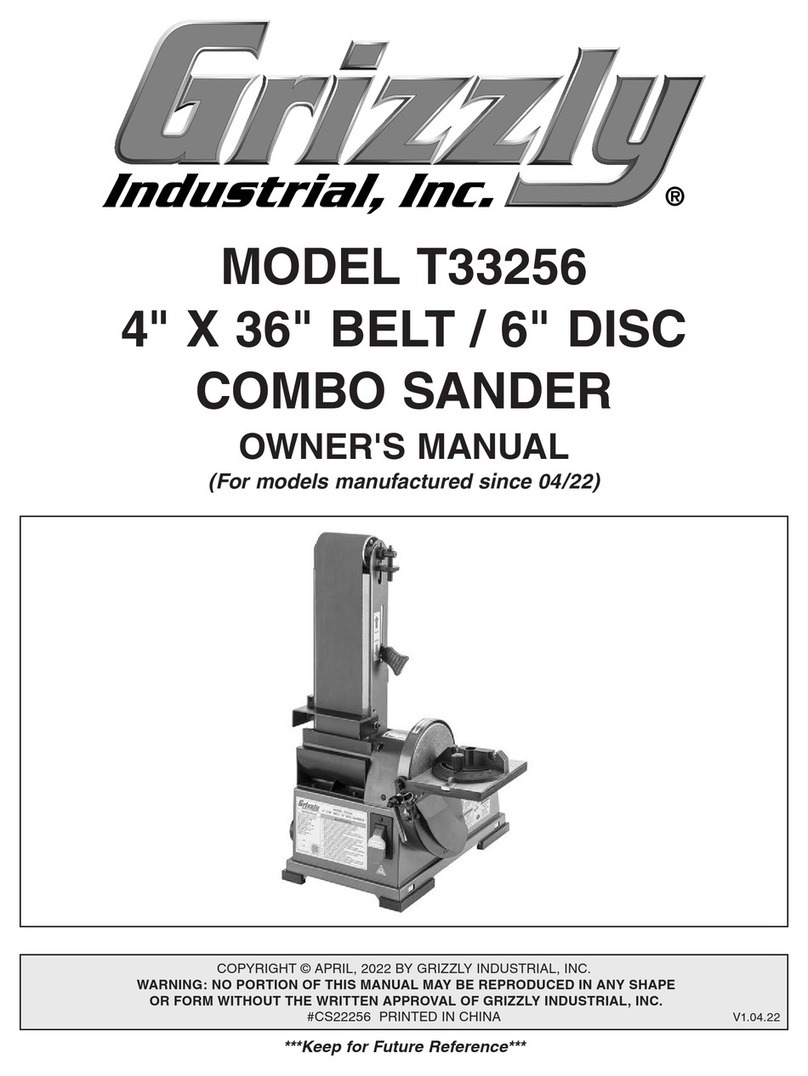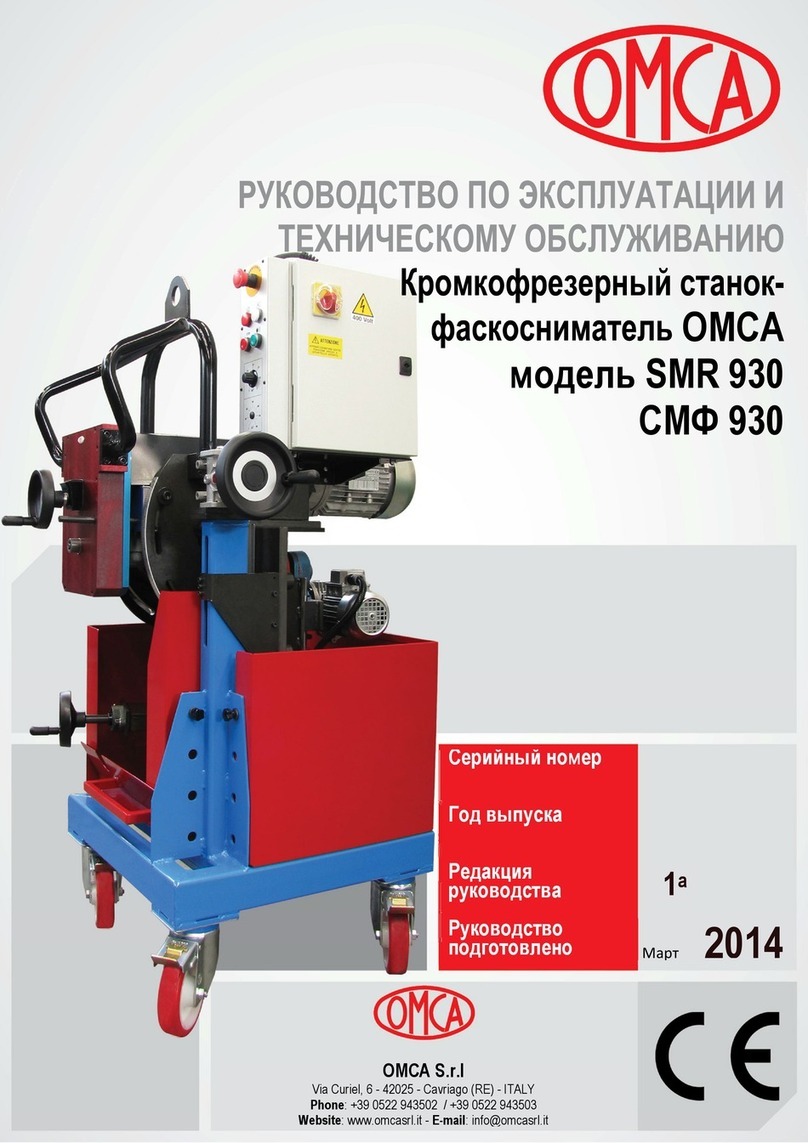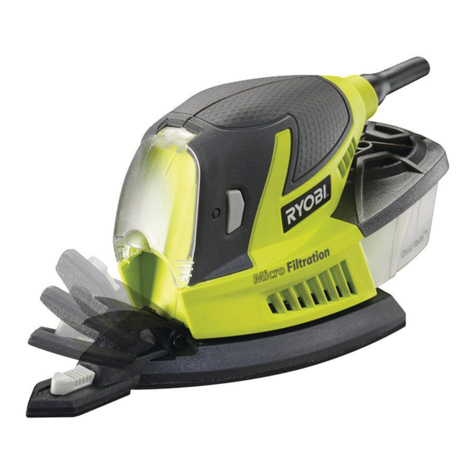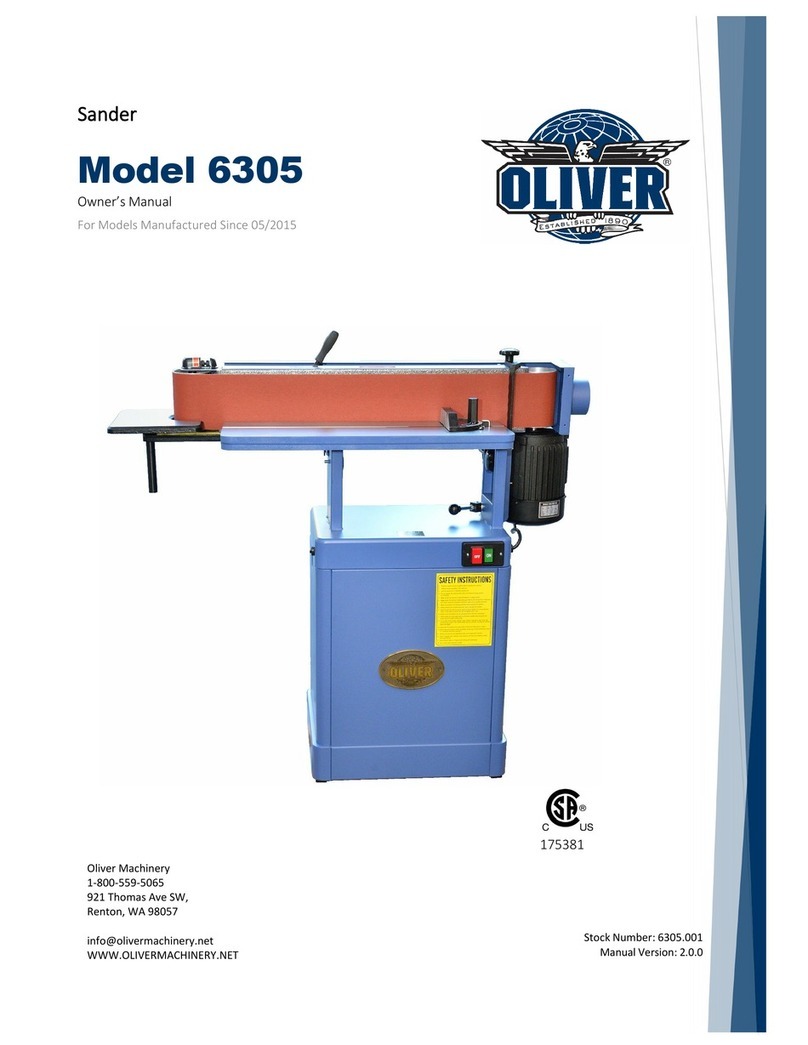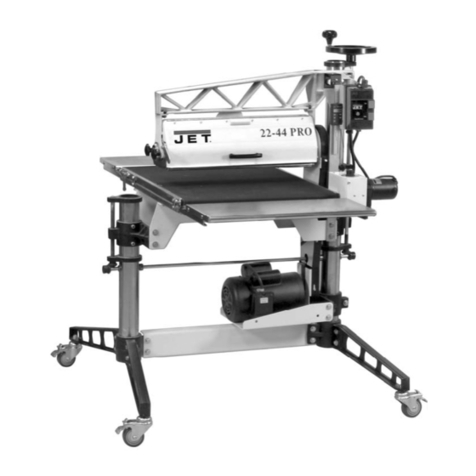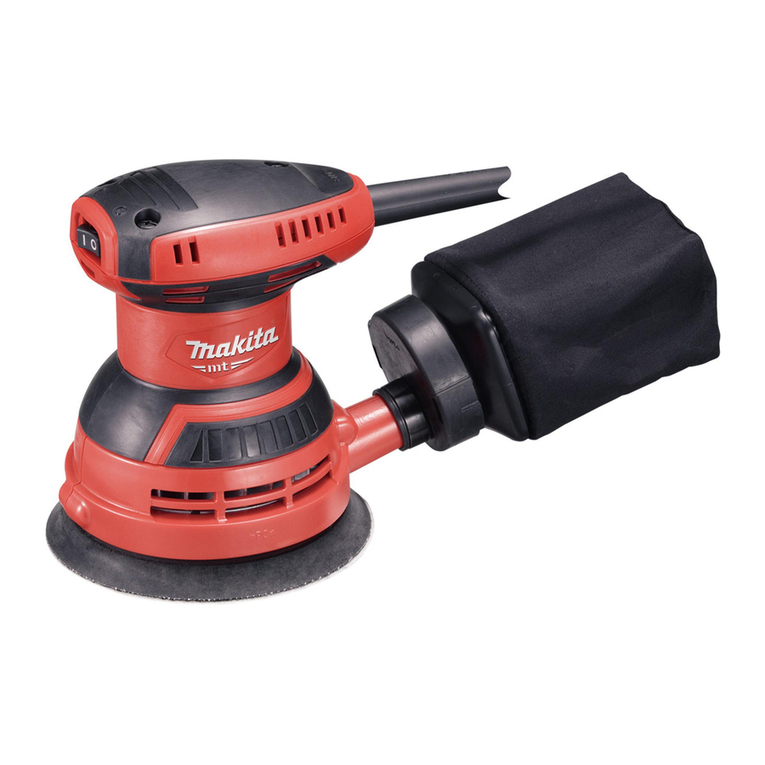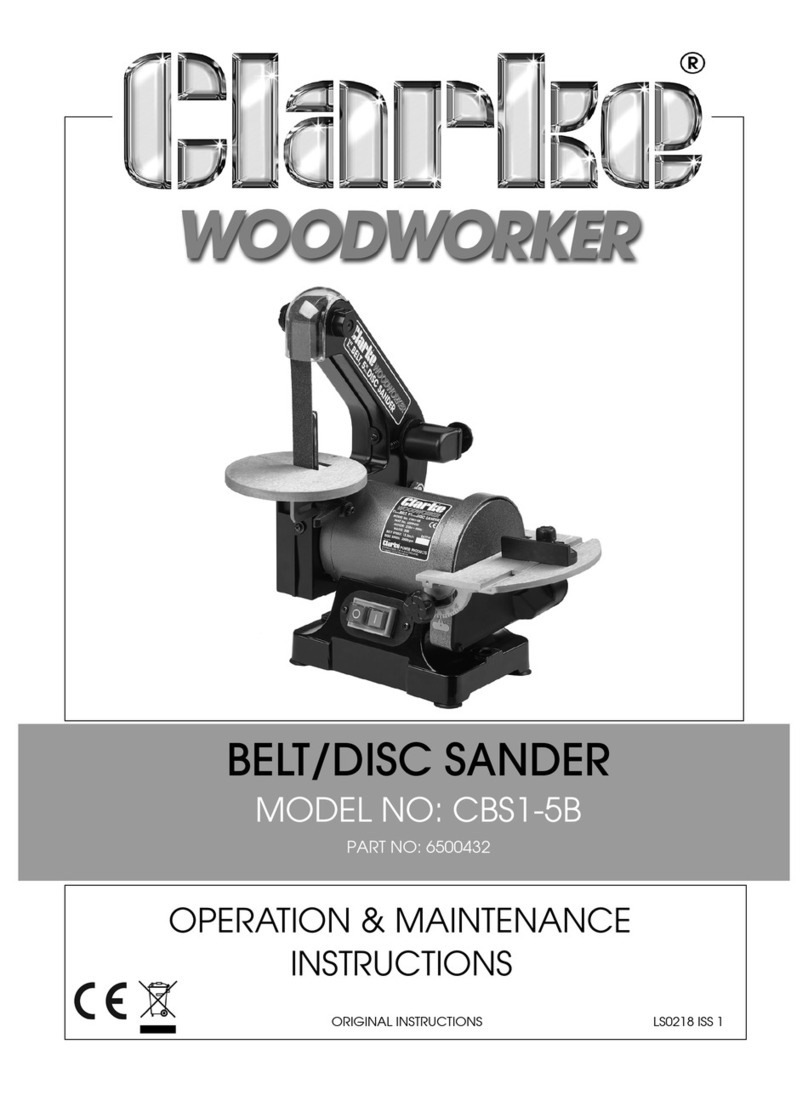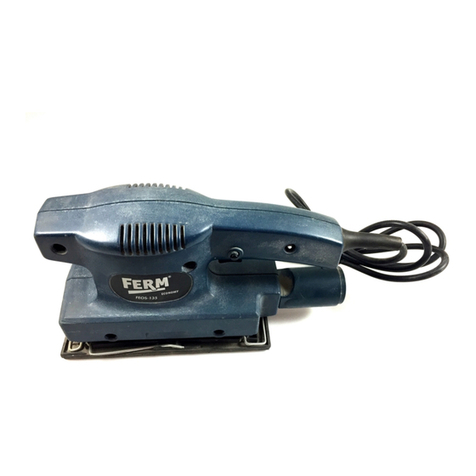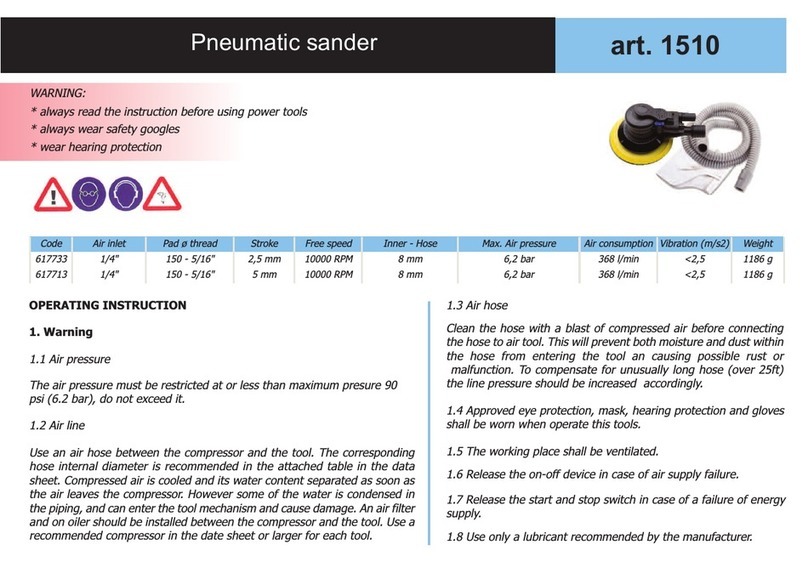
Fragments of workpiece or of a broken accessory may y away and cause injury beyond immediate area of operation.
1.2.2. SPECIFIC POWER TOOL ELECTRICAL SAFETY
9Power tool plugs must match the outlet. Never modify the plug in any way.
8DO NOT use any adaptor plugs with earthed (grounded) power tools. Unmodied plugs and matching outlets will reduce risk of
electric shock.
9Avoid body contact with earthed or grounded surfaces, such as pipes, radiators, ranges, and refrigerators. There is an increased
risk of electric shock if your body is earthed or grounded.
8DO NOT expose power tools to rain or wet conditions. Water entering a power tool will increase the risk of electric shock.
8DO NOT abuse the cord. Never use the cord for carrying, pulling, or unplugging the power tool. Keep cord away from the heat, oil,
sharp edges or moving parts. Damaged or entangled cords increase the risk of electric shock.
9 When operating a power tool outdoors, use an extension cord suitable for outdoor use. Use of a cord suitable for outdoor use
reduces the risk of electric shock.
9 If operating a power tool in a damp location is unavoidable, use a residual current device (RCD) protected supply. Use of an RCD
reduces the risk of electric shock.
1.2.3. PERSONAL SAFETY
9Stay alert, watch what you are doing and use common sense when operating a power tool.
8DO NOT use a power tool whilst you are tired or under the inuence of drugs, alcohol, or medication. A moment of inattention
whilst operating power tools may result in serious injury.
9 Use personal protective equipment. Always wear eye protection. Protective equipment such as dust mask, non-skid safety shoes,
hard hat or hearing protection use for appropriate conditions will reduce personal injuries.
9 Prevent unintentional starting. Ensure the switch is in the o-position before connecting to power source and/or battery pack,
picking up or carrying the tool. Carrying power tools with your ngers on the switch or energising power tools that have the switch
on invites accidents.
9 Remove any adjusting key or wrench before turning the power tool on. A wrench or a key left attached to a rotating part of the
power tool may result in personal injury.
8DO NOT overreach. Keep proper footing and balance at all times. This enables better control of the power tool in unexpected
situations.
9Dress properly. DO NOT wear loose clothing or jewellery. Keep your hair and clothing away from moving parts. Loose clothes,
jewellery or long hair can be caught in moving parts.
9If devices are provided for the connection of dust extraction and collection facilities, ensure these are connected and properly used.
Use of dust collection can reduce dust-related hazards.
8DO NOT let familiarity gained from frequent use of tools allow you to become complacent and ignore tool safety principles.
A careless action can cause severe injury within a fraction of a second.
9 Wear personal protective equipment. Depending on application, use face shield, safety goggles or safety glasses. As appropriate,
wear dust mask, hearing protectors, gloves and work show apron capable of stopping small abrasive or workpiece fragments.
The eye protection must be capable of stopping ying debris generated by various applications. The dust mask or respirator must
be capable of ltrating particles generated by the particular application. Prolonged exposure to intensity noise may cause hearing
loss.
8DO NOT run the power tool while carry it at your side. Accidental contact with the spinning accessory could snag your clothing,
pulling the accessory into your body.
1.2.4. POWER TOOL USE AND CARE
8DO NOT force the power tool. Use the correct power tool for your application. The correct power tool will do the job better and
safer at the rate for which it was designed.
8DO NOT use the power tool if the switch does not turn it on and o. Any power tool that cannot be controlled with the switch is
dangerous and must be repaired.
9 Disconnect from mains supply before making any adjustments, changing accessories, or storing power tools. Such preventive
safety measures reduce the risk of starting the power tool accidentally.
9Store idle power tools out of the reach of children and do not allow persons unfamiliar with these power tools or these instructions
to operate the power tool. Power tools are dangerous in the hands of untrained users.
9Maintain power tools and accessories. Check for misalignment or biding of the moving parts, breakage of parts and any other
condition that may aect the power tool’s operation. If damages, have the power tool repaired before use. Many accidents are
caused by poorly maintained power tools.
9 Use the power tool, accessories, and tool bits etc, in accordance with these instructions, taking into account the working conditions
and the work to be performed. Use of the power tool for operations dierent from those intended could results in a hazardous
situation.
9Keep handles and grasping surfaces dry, clean, and free from oil and grease. Slippery handles and grasping surfaces do not allow
for safe handling and control of the tool in unexpected situation.
9 Kickback is the result of power tool misuse and/or incorrect operating procedures or conditions and can be avoided by taking
proper precautions:
9 Maintain a rm grip on the power tool and position your body and arm to allow you to resist kickback forces. Always use auxiliary
handle, if provided, for maximum control over kickback or torque reaction during start-up. The operator can control torque reactions
or kickback forces, if proper precautions are taken.
9Never place your hand near the rotating accessory. The accessory may kickback over your hand.
8DO NOT position your body in the area where power tool will move if kickback occurs. Kickback will propel the tool in the direction
opposite to the wheel’s movement at the point of snagging.
9 Use special care when working corners, sharp edges etc. Avoid bouncing and snagging the accessory. Corners, sharp edges or
bouncing have a tendency to snag the rotating accessory and cause loss of control or kickback.
8DO NOT attach a saw chain woodcarving blade or toothed saw blade.
9 This power tool is intended to function as a sander. Read all safety warnings, instructions, illustrations, and specications
provided with this power tool. Failure to follow all instructions listed below may result in electric shock, re and/or serious
injury. Operations such as grinding, wire brushing and polishing are not to be performed with this power tool. Operations for which
the power tool was not designed may create a hazard and cause personal injury.
8DO NOT convert this power tool to operate in a way which is not specically designed and specied by the tool manufacturer.
Original Language Version
© Jack Sealey Limited DWS215 Issue 1 08/11/22
